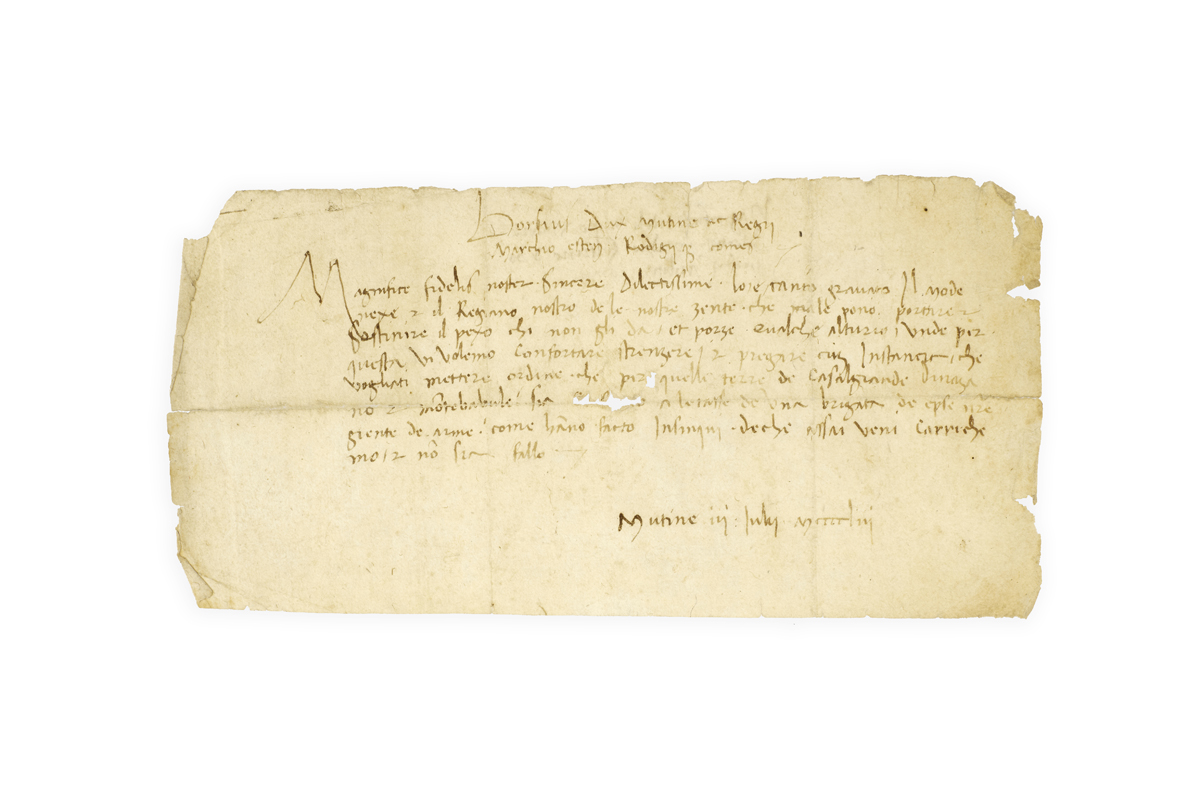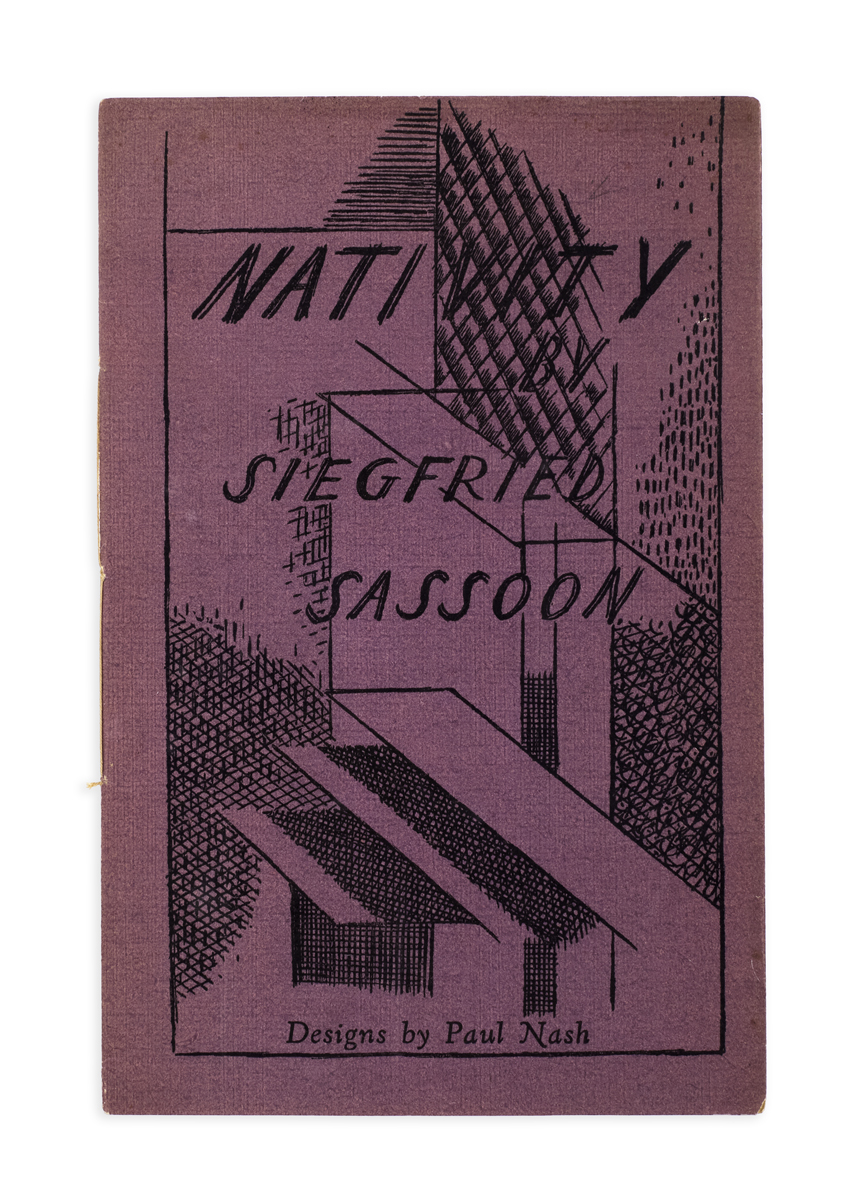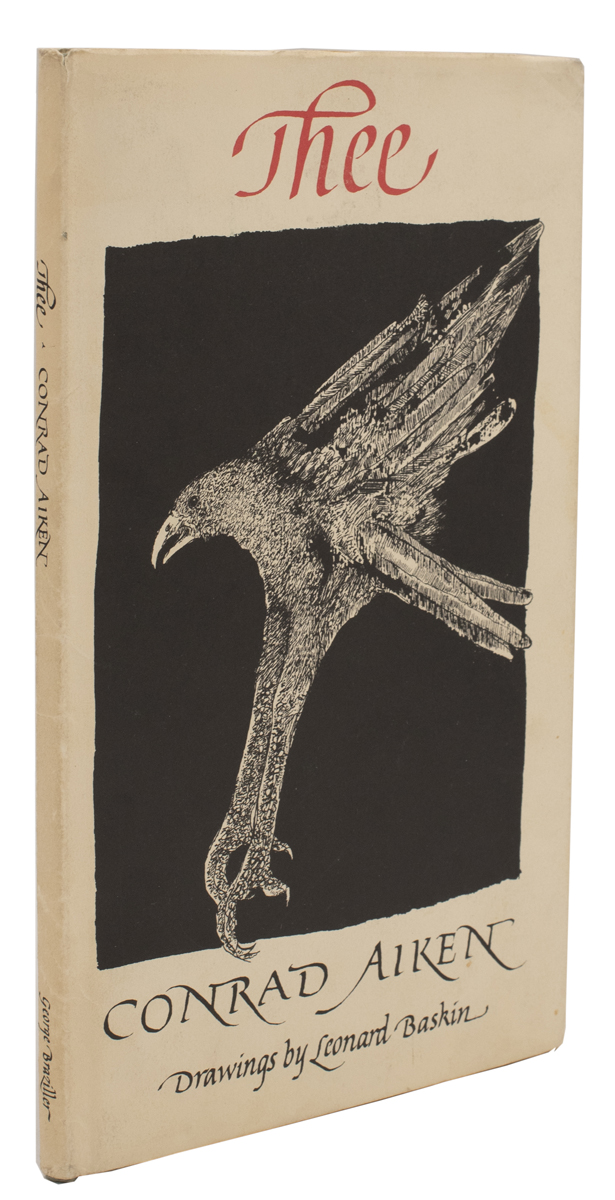
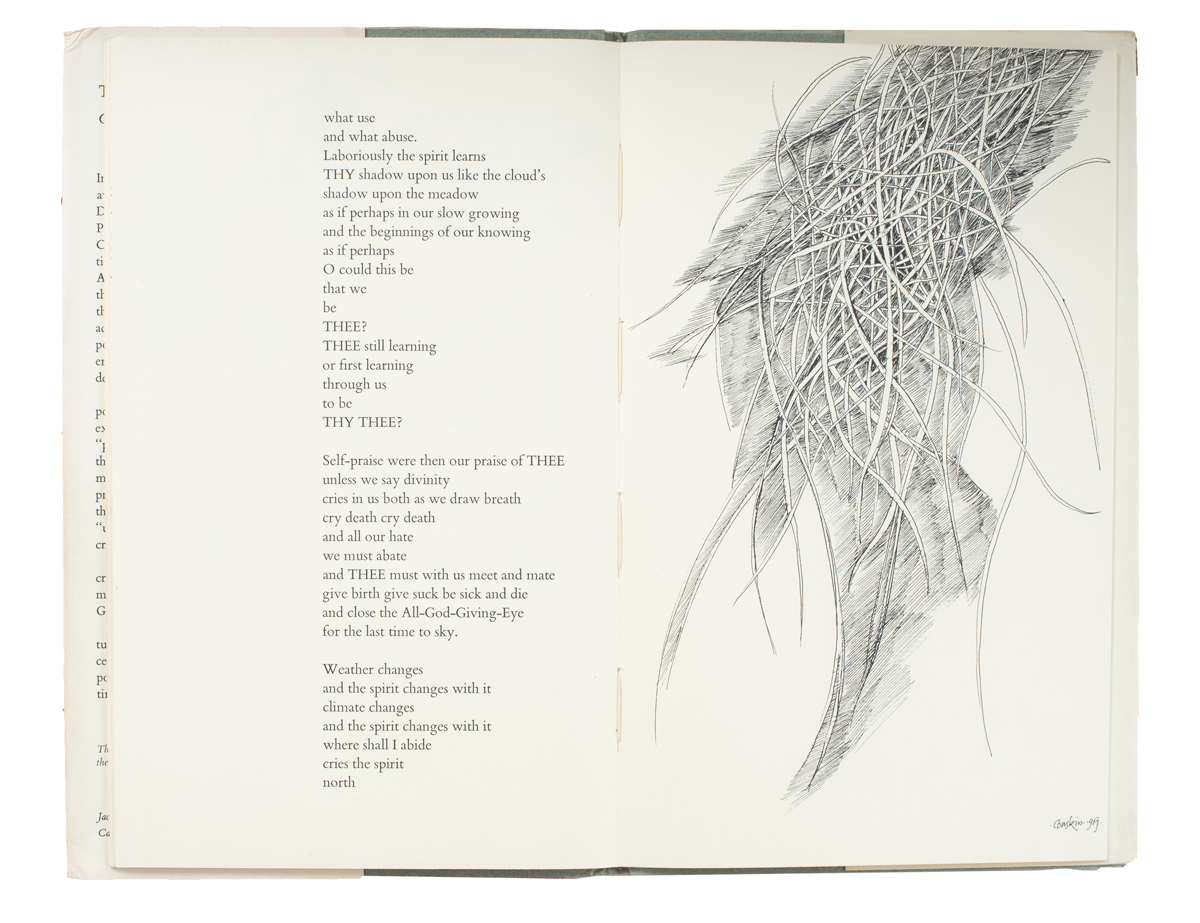
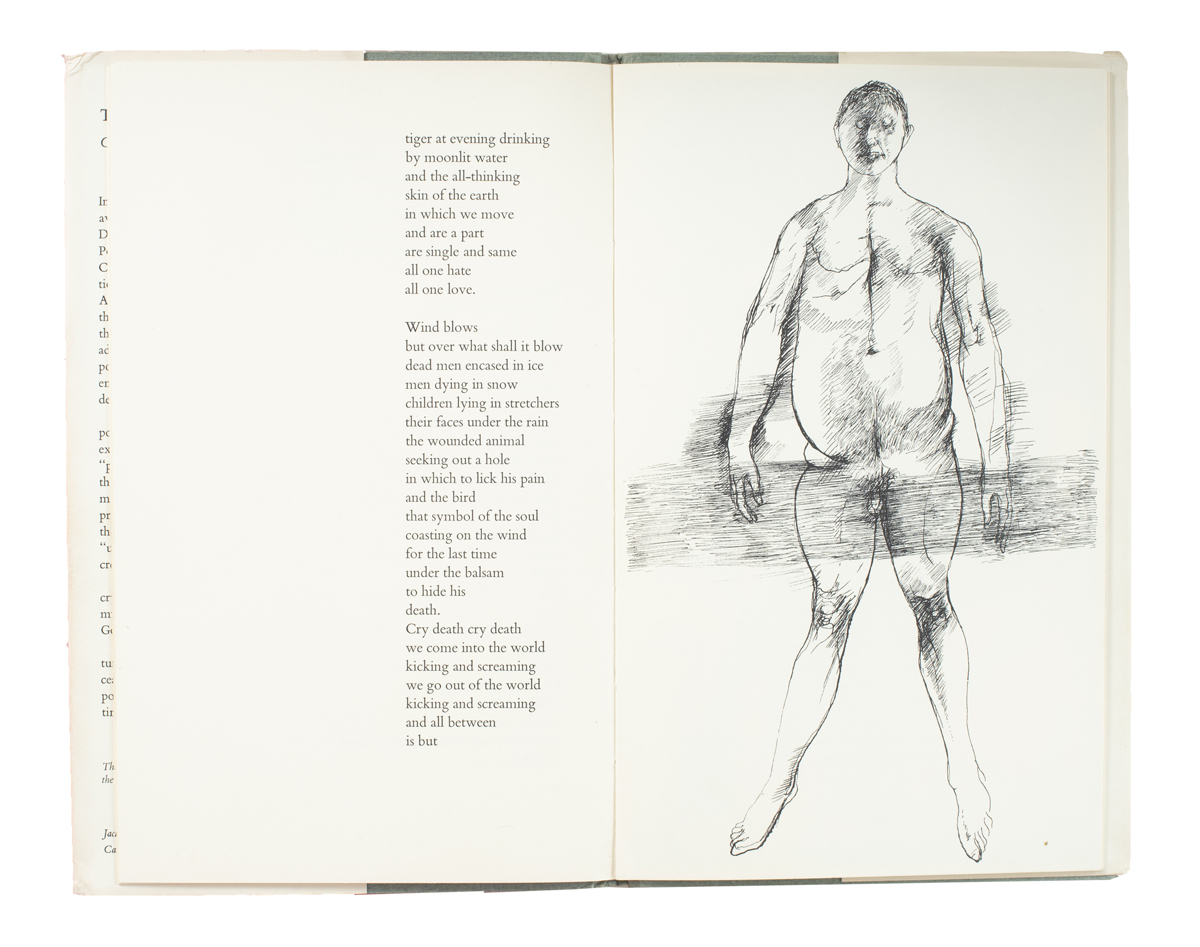

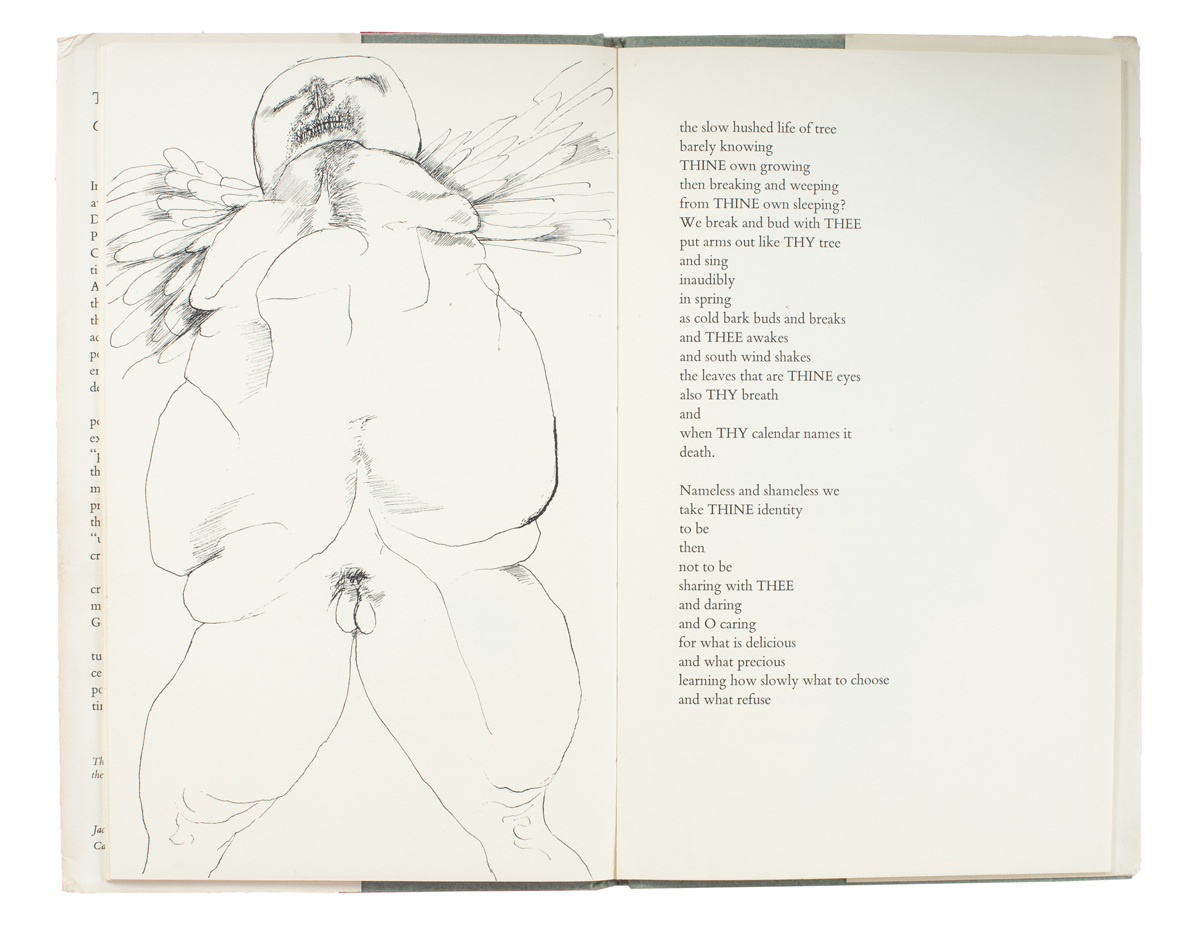
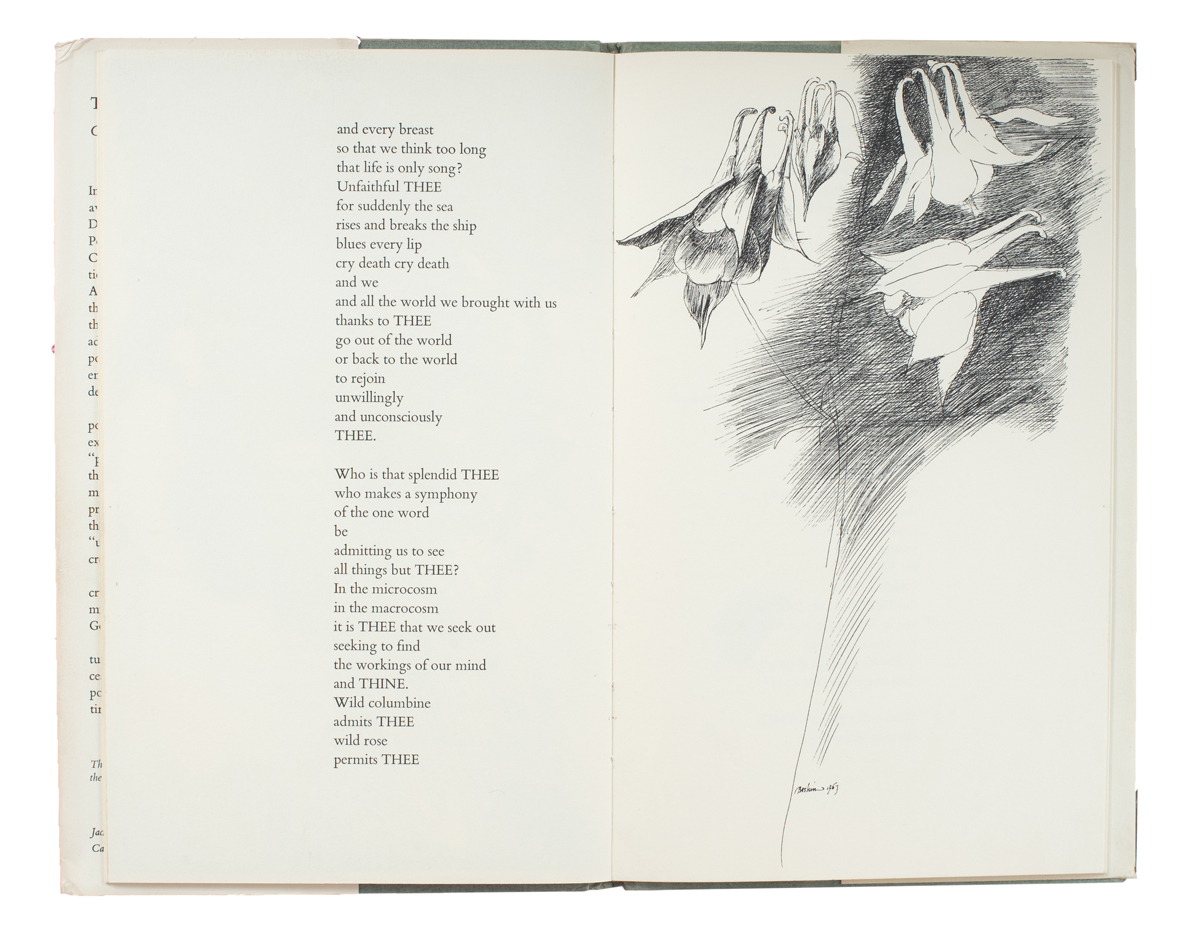
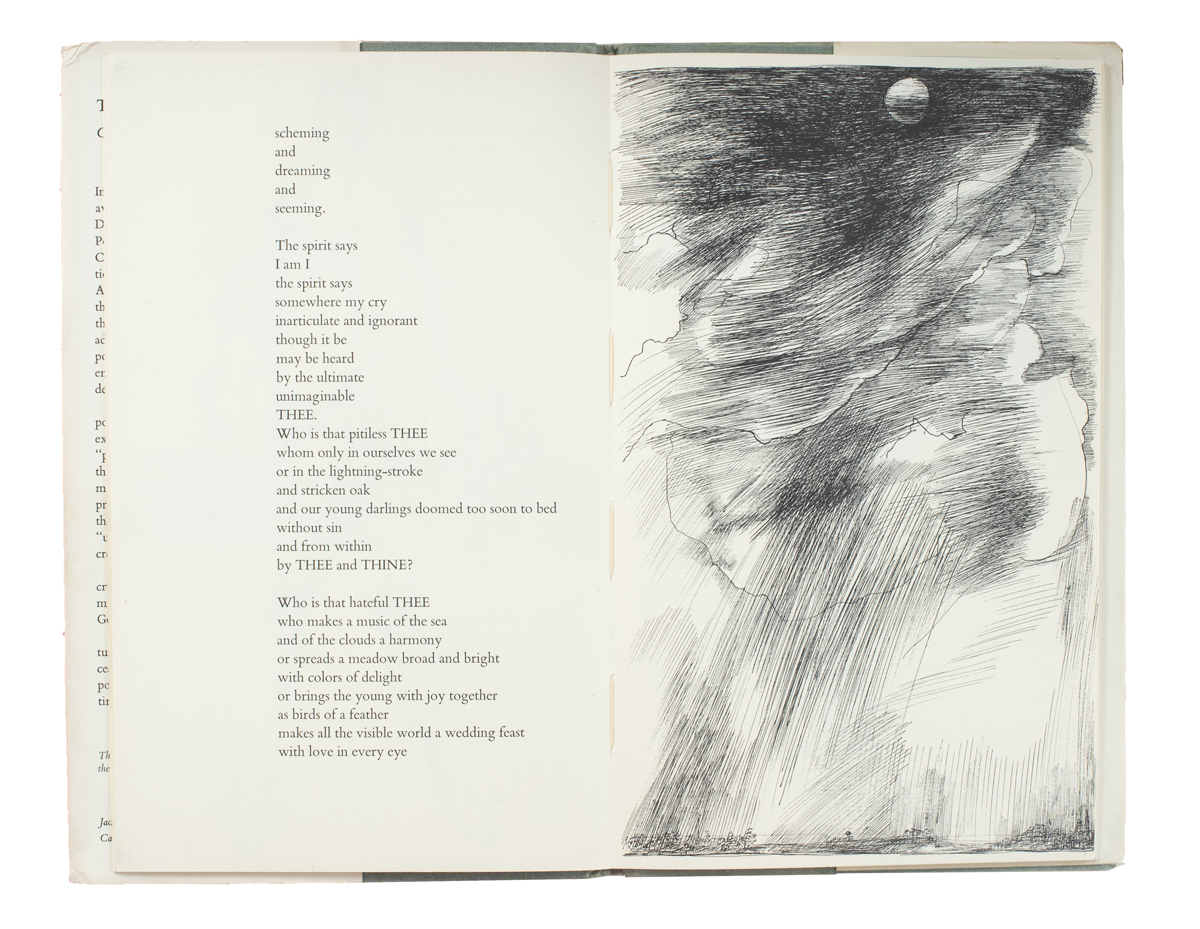
RECORDED FOR RADIO BY BRIDSON
AIKEN, Conrad.
Thee.
New York, George Braziller, 1967.
8vo, pp. [24], with illustrations thoughout by Leonard Baskin; publisher’s blue-grey boards, white dust-jacket printed in red and black; a fine copy in a good jacket, a few short tears at head; from the library of the poet and BBC radio producer D. G. Bridson.
£250
US $321 €295
If you wish to order more than one copy of this publication please make an enquiry. Add to basket Make an enquiry
First trade edition, inscribed ‘For Geoffrey and Joyce [Bridson] / this little hymn of love / from Conrad / 1968’.
‘The last time I saw Conrad Aiken was in [April] 1968, when I went down to visit him at Savannah and record his reading of Thee’ (Bridson, Prospero and Ariel). They visited the cemetery where Aiken’s parents were buried – his father had killed his mother and then committed suicide. ‘I suggested he might like to record his own remembrance of it, in view of the strong bearing it had on so much of his creative work’. Aiken agreed, with the stipulation that the recording was not to be broadcast in his lifetime. It remains a major source for Aiken’s biography.
There was also a limited edition of 200 copies signed by both Aiken and Baskin.
